

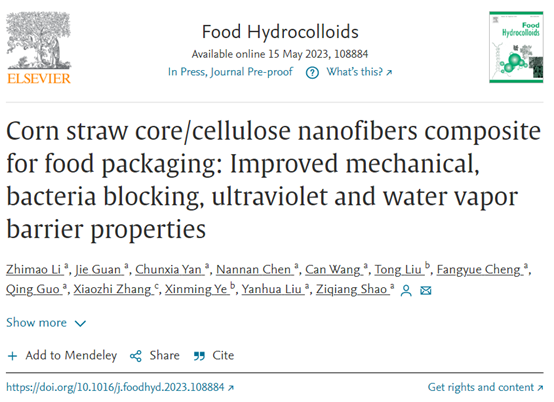
玉米秸秆是迄今为止最容易获得的农作物秸秆,来源非常广泛,占农业废弃物总量(玉米秸秆、小麦秸秆和水稻秸秆)的近50%。为了推动农业废弃物的高值化利用,为祖国早日实现碳中和添砖加瓦。北京理工大学材料学院邵自强课题组充分利用玉米秸秆芯微粒微观结构,以纤维素纳米纤维增强组份,通过共交联方法,制备了一种力学性能优良,兼具水蒸气阻隔性、细菌阻隔性以及抗紫外线性能的食品包装材料。
Highlights:
1. 1. The problem that corn straw core cannot form a film has been solved.
2. 2. The CNF/CSC films has bacteria blocking, UV and water vapor barrier properties.
3. 3. In practical packaging tests, CNF/CSC films has a good effect on food storage.
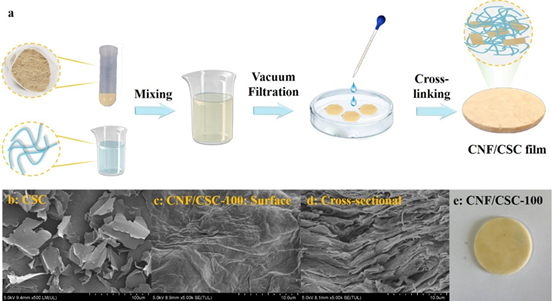
Fig. 1. (a) Fabrication of the CNF/CSC nanocomposite films. (b) SEM image of CSC. SEM images of CNF/CSC-100 about (c) surface and (d) cross-sectional. (e) Optical image of CNF/CSC-100 nanocomposite film.
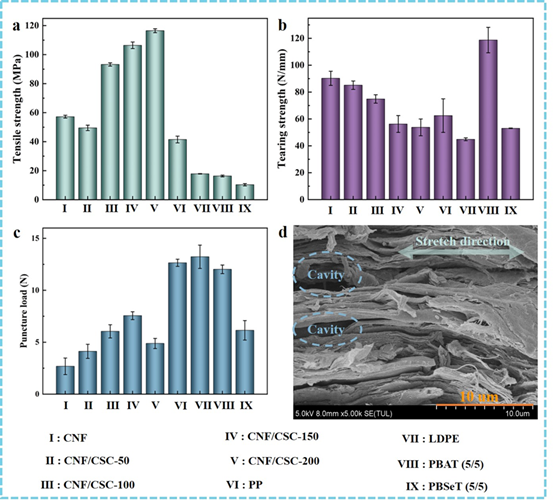
Fig. 2. (a) Tensile strength, (b) tearing strength and (c) puncture load of CNF, PP, LDPE, PBAT, PBSeT and CNF/CSC with different CSC contents. (d) SEM image of CNF/CSC-100 about cross-sectional.
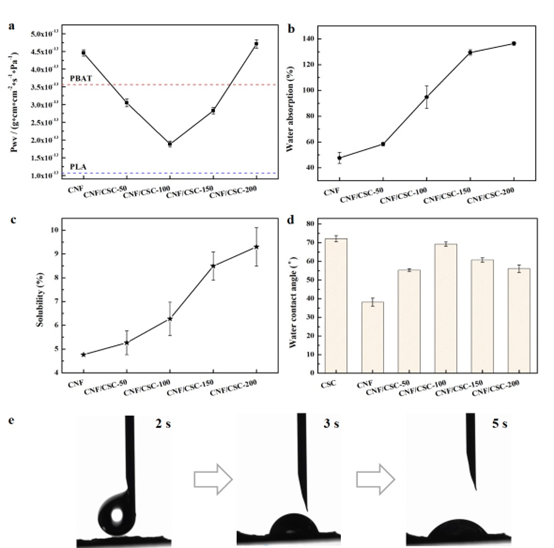
Fig. 3. (a) The water vapor transmission coefficient (Pwv), (b) water absorption, (c) solubility and (d) water contact angle images of CNF and CNF/CSC composite film. (e) Snapshots of a water droplet spreading on the CNF/CSC-100 film in air.
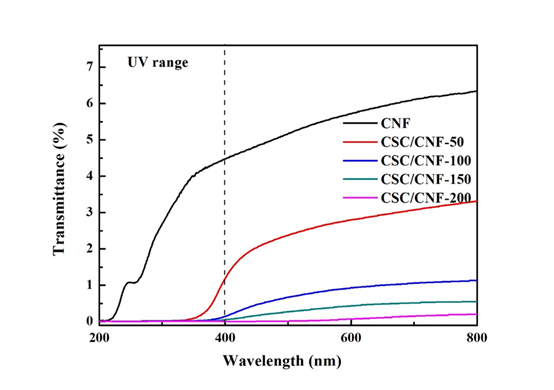
Fig. 4. UV–vis transmittance of CNF and CNF/CSC films.
相关论文以题为“Corn straw core/cellulose nanofibers composite for food packaging: Improved mechanical, bacteria blocking, ultraviolet and water vapor barrier properties”发表在Food Hydrocolloids (1区TOP,IF=11.504)上。北京理工大学材料学院博士研究生李枝茂为论文的第一作者,通讯作者为邵自强教授。
论文链接:
https://doi.org/10.1016/j.foodhyd.2023.108884